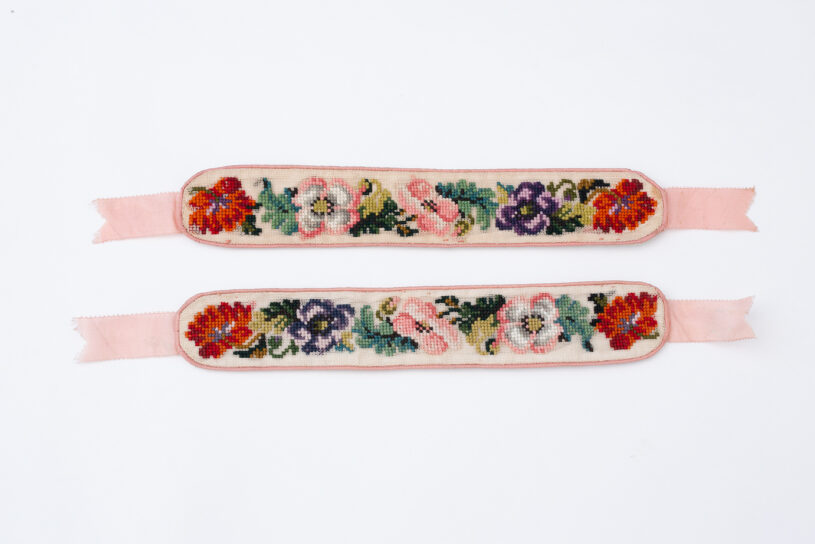Garter

Long before self-holding stockings were invented, the garter held the leg garment at the desired height by means of a bow or buckle. But beware: “Overly taut garters exert a detrimental influence on blood circulation and on the beauty of the calf shape. Results: Congestion of the blood, varicose veins and lower leg ulcers.” So it is written in the note on garters below the knee preserved in the collection.
Evidence of the garter in Europe dates back to the 16th century. From the 18th century onwards, silk and satin were preferred for luxury variants. Embroidery adorned the garter in the shapes of ornaments or letters. A bride’s garters especially were often richly designed and were loosened by the husband on the wedding night. Thus, the garter became a feminine accessory, often with erotic connotations. However, until the middle of the 18th century there was another variant of this otherwise sensual object: A cruel punishment garter made of iron spikes bent inwards was common in Austrian women’s convents, along with a penitential belt and scourge.